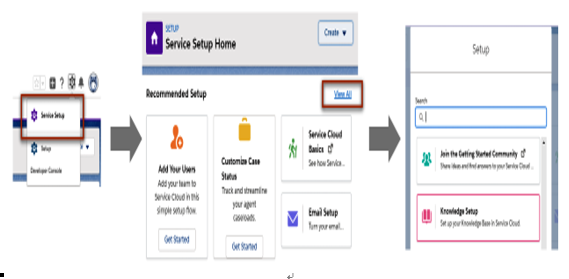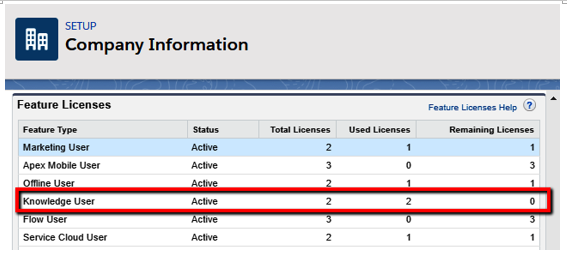Setting up Salesforce Lightning Knowledge
The easiest way to set up Salesforce Lightning Knowledge is by using the Lightning Knowledge Setup flow, which is accessible from Settings | Service Setup | View All | Knowledge Setup:

Lightning Knowledge Flow activation
This wizard executes the following actions:
- Enables Lightning Knowledge.
- Selects the users who will be the authors (the ones with create and publish permissions).
- Creates data categories and groups (for example, the Southern Europe group, with Italy, Germany, and France as categories). Don’t worry about setting up categories at this stage; you can set them up later.
After completing the wizard, go to Setup | Object Manager and look for the Knowledge object that has just been enabled on the organization. Its API name is different from the other standard or custom objects because it ends with the __kav suffix.
A record type called FAQ will have been created for you (along with a dedicated page layout), as well as the Question and Answer custom fields (feel free to remove them and create your own custom fields if you wish to).
The users you selected in the first step of the wizard will have the Knowledge User user’s permission (you can always add this permission manually to other user records).
This permission grants the user access to the knowledge authoring actions (if we go to the Knowledge tab from App Launcher without the Knowledge User permission, we will be able to see all of the available articles, but we won’t see a New button so that we can create more).
The user also gets the Knowledge LSF permission set, which grants edit and publish permissions on articles, as well as object-level and field-level permissions on the Knowledge object.
Assigning the permission set without activating the Knowledge User setting is not enough to enable an author. This is because the number of licensed knowledge users is limited by your organization’s license limits. You can find your organization’s limits by going to Setup | Company Settings | Company Information in the Feature Licenses section:

Knowledge User feature license
As a general rule, only selected users can access authoring capabilities, but all internal users get automatic access to knowledge articles in read-only mode (unless their profile has been configured so that they can’t access the Knowledge object).
Lightning Knowledge uses user permissions to grant access to authoring actions. On the other hand, Classic Knowledge uses public groups and article actions.
